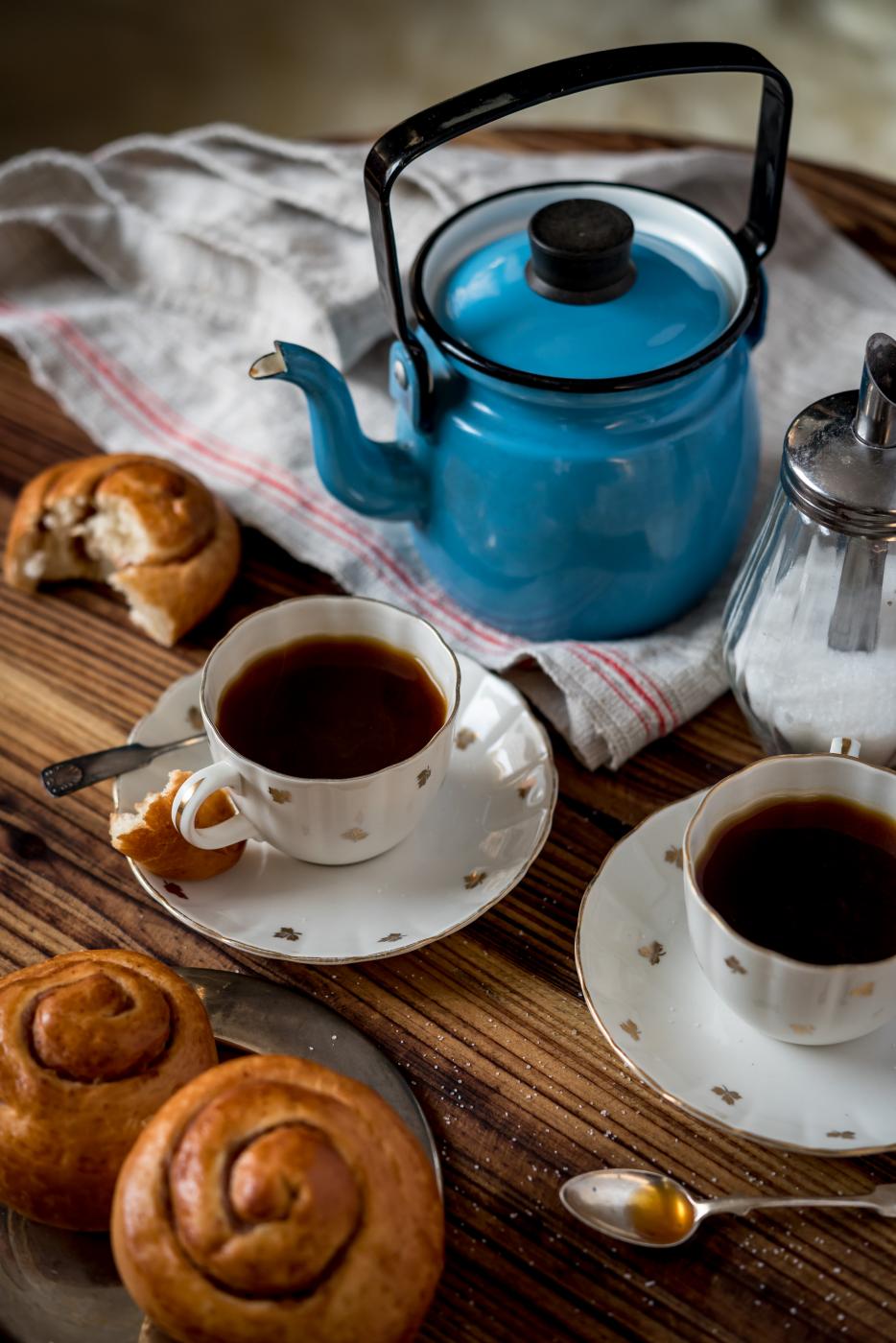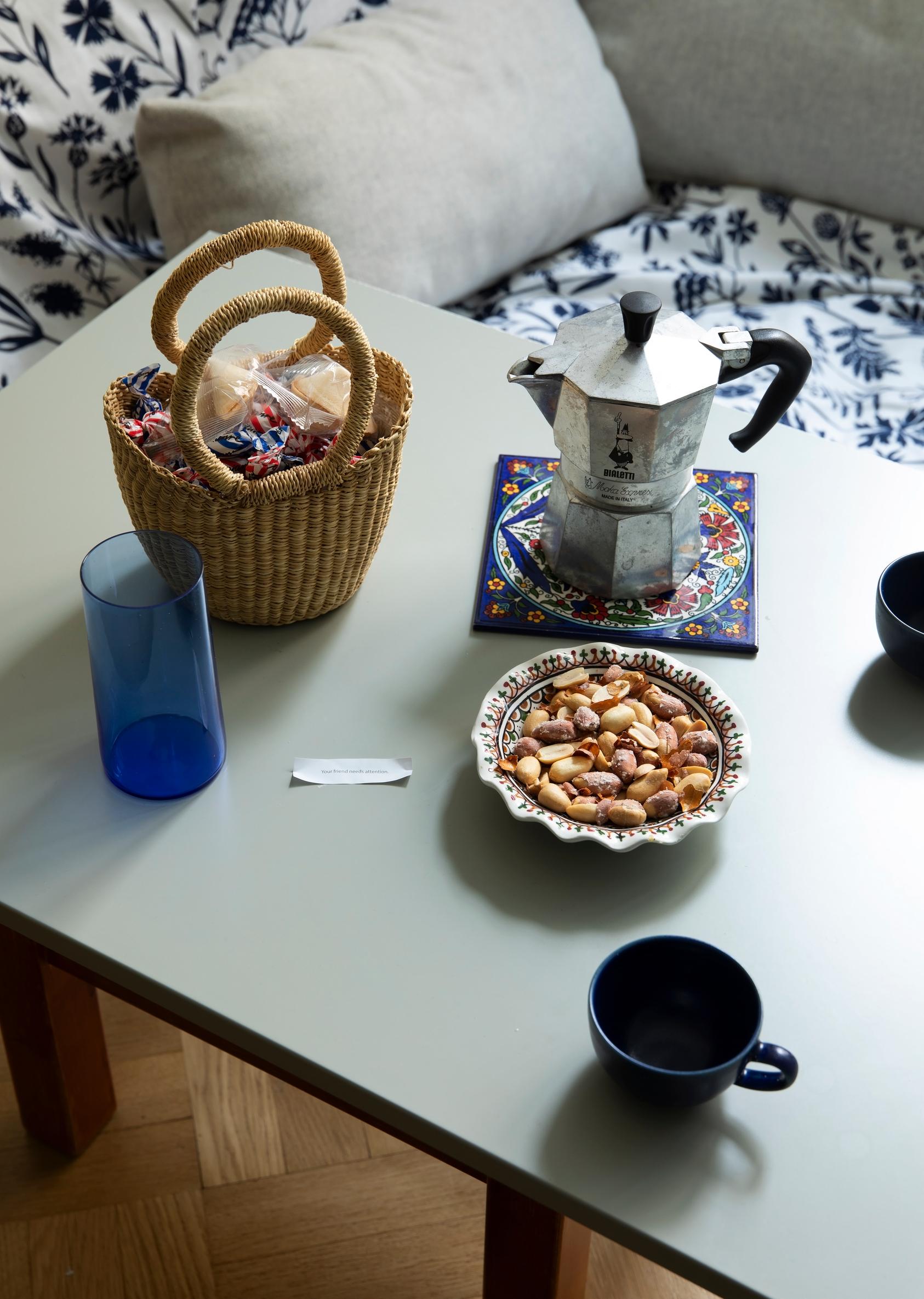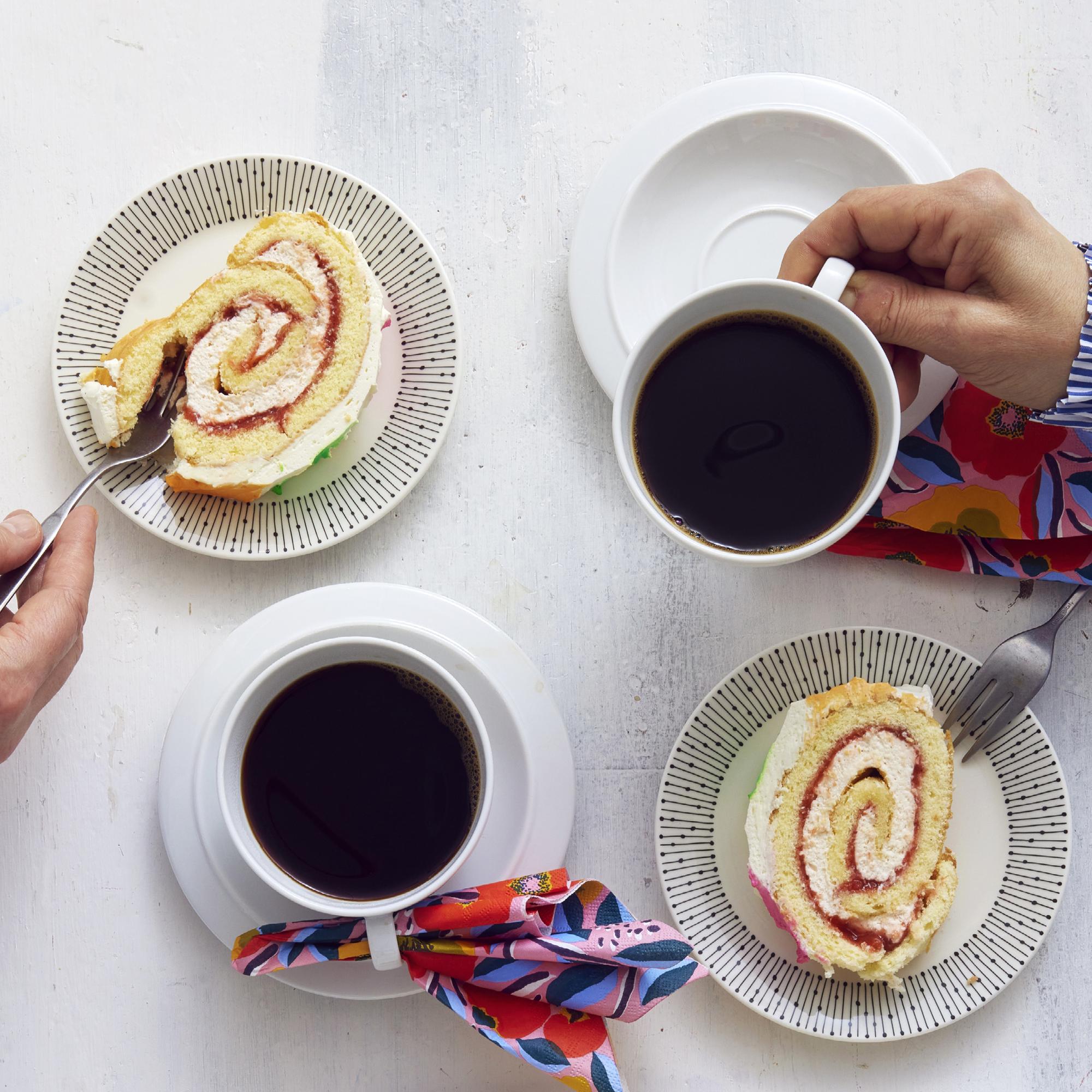
From gas stations to family functions, Finns sip coffee everywhere—more than anyone else in the world
Did you know that Finns drink the most coffee in the world? Light-roast coffee made in a home coffee maker remains the classic, yet coffee cocktails, decaf, cold brew, and darker roasts are on the rise.
Birthday coffee, election coffee, church coffee, medal coffee, graduation coffee. Morning coffee, the coffee break. Want to come over for coffee? The coffee culture that unites the whole nation is a big part of everyday life and celebrations in Finland.
Finns drink more coffee per capita than anywhere else in the world. Coffee is part of our cultural heritage, something we rarely even think about, says Finnish coffee expert and barista Jarno Peräkylä.
“In many traditional celebrations marking different life events, such as christenings, name-giving ceremonies, confirmation parties, weddings, or funerals, it might even feel strange if coffee wasn’t served,” he states.
Finns drink an average of 3.2 cups of coffee per day. Those over 65 consume the most coffee. Of them, 95 percent enjoy coffee every day.Sources: Paulig brand tracking, 2023, Coffee consumption study 2024, Nepa
Coffee traditions arrived in Finland in the 1700s, when bourgeois merchants from Turku brought the first beans to town. Initially, coffee was a delicacy for the nobility, but it later spread to parsonages and urban bourgeois circles.
“In the old days, for instance, christenings were held together with church services, and coffee was served to the entire congregation. This introduced new, communal forms of coffee culture and spread it among ordinary people,” says the Secretary General of Marianne Heikkilä of Marttaliitto, the Finnish non-profit focusing on home economics.

Even today, coffee brings people together because it’s easy to gather around it.
“Coffee is a neutral and widely accepted pleasure drink that serves as a social glue and enhances community in every setting. Drinking coffee doesn’t separate social or economic classes, but is perceived as a beverage that unites the entire nation,” Heikkilä continues.
“And if we consider that small talk and sociability might not come naturally to Finns, we have this institution called afternoon coffee, where we gather around coffee and spend time together without any more formal agenda,” Peräkylä reflects.
Finns consume nearly nine kilograms (about 20 lb) of coffee per person each year.Source: Hot Drinks: Euromonitor from trade sources/national statistics, 2023
Despite its strong traditions Finnish coffee culture is constantly becoming more diverse. According to coffee trainer Laura Kietäväinen from the Finnish coffee brand Paulig, people have become excited about trying different coffees.
“Selections have diversified in supermarkets as well as in cafés. Even most gas stations now typically offer at least a couple of different filter coffees,” Kietäväinen says.
“Light-roast coffee is popular in Finland because we have good water, which yields tasty coffee. In Central and Southern Europe, the water quality is such that dark-roasted coffees work better.”Laura Kietäväinen
The majority of Finns, around 70 percent, prefer light-roast coffees. Interest in dark-roast options has steadily grown in recent years.
“Light-roasted Juhla Mokka is still Finland’s most popular coffee, but the range has expanded quite a bit. Store shelves now offer many varieties, origins, and roast levels from different roasters. Medium- and dark-roast coffees hold about a third of the market,” says Laura Kietäväinen.
When a coffee drinker decides to try something new, they often start with a dark roast, which has bold, rich flavors. But as people delve deeper into the world of coffee, they eventually circle back to light-roast filter coffee.
“The most valuable and refined coffees are typically light-roasted. Roasting them lightly brings out their inherent flavors and nuances best,” explains Jarno Peräkylä.
Coffee....
...wakes you up in the morning (and keeps you awake in the afternoon)
...gives structure to your day
...acts as social glue during workplace coffee breaks
...serves as a calming gesture and a sign of reconciliation in tough situations
...symbolizes warmth and kindness
...creates a sense of dignity and a warm atmosphere.

At home, coffee is most often brewed with a filter coffee maker, and the brand Moccamaster remains very popular, says Jarno Peräkylä.
In the 2023 Brand Appreciation survey by Taloustutkimus, Moccamaster was Finland’s 20th most valued brand.
“A coffee machine might even be the very first thing a young adult buys when moving out,” Peräkylä says.
On the other hand, if there isn’t much counter space in the kitchen and there are only one or two coffee drinkers, a moka pot or French press might replace the coffee machine.
“The sale of coffee beans has also started to rise gradually. People either grind beans at home and brew filter coffee, or they have an espresso machine,” says Laura Kietäväinen.
Specialty coffee culture is strong in Finland, observes Jarno Peräkylä. While everyday coffee is an ordinary ingredient among others, in specialty coffee culture, coffee can be viewed much like wine.
“For coffee enthusiasts, origin, variety, and preparation method matter. For example, Brazilian coffee tastes very different from Kenyan coffee,” Peräkylä says.
Coffee enthusiasts seek experiences around coffee.
“The hobby might mean taking a moment away from everyday life to carefully prepare your coffee, or it could mean testing small specialty batches from various roasters, trying to achieve the best possible extraction,” Peräkylä explains.
A coffee drinker’s climate actions
Climate change threatens coffee crops worldwide. So avoid coffee waste: brew only the amount you need.
Sort coffee grounds into biowaste.
Turn off the coffee maker once the coffee has finished brewing.
Choose responsibly produced coffee.
Source: Martat
Do you take sugar?
Good coffee tastes inherently sweet and doesn’t need balancing, says Jarno Peräkylä.
When working as a barista, he often encourages customers to taste the coffee before adding sugar.
“When attention is paid to coffee extraction and the raw material is good, the coffee isn’t bitter or sour at all. Many customers taste it and then decide not to add sugar or milk,” he says.
Not much has changed regarding sugar use in coffee in recent years.
“Sugar use is fairly limited in Finland. It’s likely tied to personal taste preferences and the quality of the coffee. As better-tasting coffee becomes more common, people don’t feel the need to sweeten it. Some also avoid sugar altogether. If you want extra flavor, sugar-free syrups are an option,” Kietäväinen notes.
Rituals and refills

Marianne Heikkilä, Secretary General of Marttaliitto, is also an ordained minister—so having coffee at family celebrations is well familiar to her.
She fondly remembers moments where the treats were made by the family’s children or grandchildren.
“There’s a strong sense of pride and joy in these moments, where the entire family is involved,” Heikkilä says.
At funeral receptions, coffee is a solemn ritual.
“Funeral coffee allows space for feelings of longing and anguish, for which there may be no words in that moment. It’s enough just to have coffee and share those collective emotions of grief and remembrance,” she says.
Christening celebrations reflect joy and the miracle of birth.
“At the coffee table, you often see the most exquisite baked goods and decorations. Both at funerals and christenings, you can sense deep care and love,” she says.
There’s a grand sense of celebration at a wedding. The coffee table may have been prepared with help from both families.
“Weddings usually have a more cheerful atmosphere, and coffee is enjoyed with a lovely wedding cake, but people often move on rather quickly to other beverages or just water,” Heikkilä notes.
“Decaf coffee is becoming more popular. People want to focus on sleep quality and recovery. The improved taste of decaf is also boosting its popularity.”Laura Kietäväinen
Cooling down with coffee
Cold coffee is a major trend especially among young people, says Laura Kietäväinen. Consumption is year-round, though it peaks in summer.
In addition to cold-brew coffee, trend-savvy Finns also enjoy coffee cocktails and mocktails, as well as ready-to-drink coffee beverages.
“Treating yourself with coffee is on the rise, and cold coffees in particular are seen as indulgent—especially if they come with flavored syrup and whipped cream,” Kietäväinen says.


